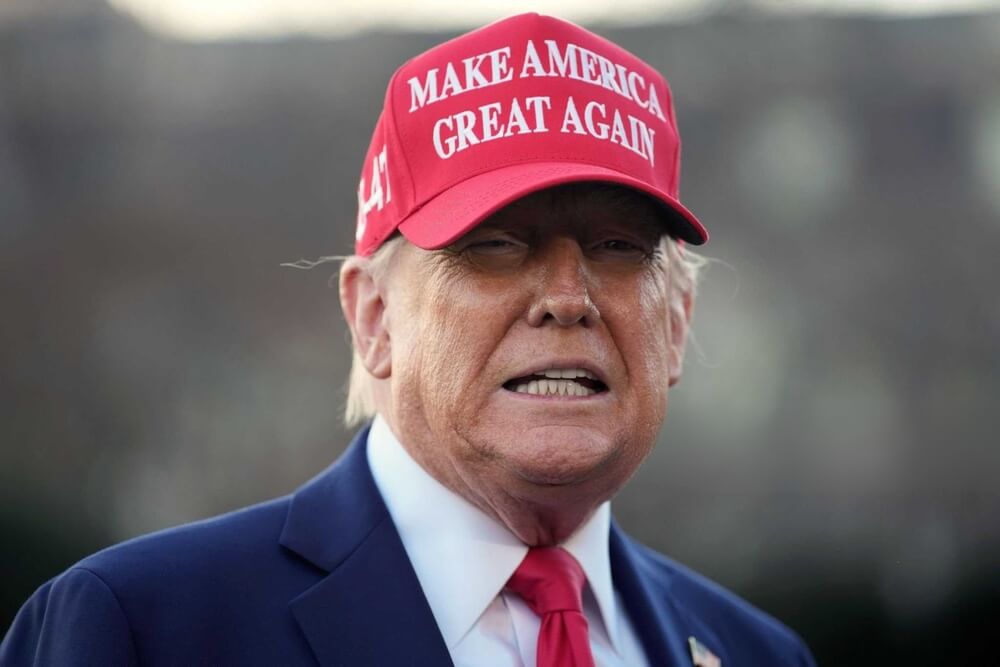On 24 July, Donald Trump paid a rare and symbolic visit to the Federal Reserve headquarters in Washington, D.C. — the first time a US president has set foot in the central bank’s building in almost 20 years.
During the visit, he criticised the renovation of the building, calling it an unnecessary luxury and citing the cost at 3.1 billion dollars, while the Fed disputed this figure and stated that the actual value of the project was 2.5 billion dollars, with further amounts including the already completed "Martin Building."
During a tour of the site, Trump called on Fed chair Jerome Powell to urgently cut key interest rates by up to three percentage points — while making it clear that he has no intention of replacing him.
However, the tone of the statement was not neutral — he had previously labelled him a "numbskull" for the alleged delay in responding to inflation.
The Federal Reserve was established in 1913 and formally institutionalised to be independent of the executive branch.
The law makes it clear that the Fed chair can only be impeached by Congress for serious incompetence or abuse of office.
Any pressure that uses the renovation of the building as an alibi for political change oversteps the bounds of the institution's statutory autonomy.
Symbolic threats, real risks
Financial markets reacted cautiously. Despite the lack of metaphorical frameworks to make sense of the crisis, 10-year US bond yields rose, while equity indices saw a slight decline.
Analysts warn that speculation about Powell's replacement could lead to an increase in the risk premium and destabilise confidence in monetary policy (the "moral hazard" scenario).
Jamie Dimon of JPMorgan warned that any political leap in monetary policy jeopardises the credibility of the central bank.
Removing Powell due to personal differences would set a dangerous precedent for the Fed
Republican senators like Tim Scott and Thom Tillis have called for official information on the renovation, suggesting that removing Powell due to personal differences would set a dangerous precedent for the Fed.
Powell responded professionally and steadfastly — confirming that he will remain in office until the end of his term in May 2026 and rejecting all options of an extrajudicial removal.
He clearly stated that he was basing the Fed's decisions on statistical data and not political pressure.
Trump's political pressure
Trump's political pressure has raised a serious question: Can the process of renovating the Fed building be instrumentalised as an opportunity to delegitimise its president, even if there is no legal basis for removal?
The whole scene — the US president visiting the construction site in protective clothing, with Powell at his side — may not have triggered an open conflict, but it sent a clear message.
Visually, it was a demonstration of political supremacy over an institution that should be independent.
At the same time, global attention is focusing on the potential impact of such a public conflict on the model of central bank independence.
The market now estimates the possibility of a rate cut as early as September
Experts say that even a symbolic threat to replace the Fed chair can prompt investors to seek a risk premium, leading to rising debt and inflation expectations.
The Federal Open Market Committee (FOMC) meets next week, and the federal funds rate is expected to remain in the 4.25-4.50% range.
The market now estimates the possibility of a rate cut as early as September with a probability of over 60%.
Partial attack or institutional crisis?
If Trump keeps up the pressure without taking formal steps regarding replacement, the central bank could face an institutional crisis.
The Senate could launch an investigation, judicial mechanisms could question the justification for the change, and financial markets could reflect fears of a long-term depoliticisation of monetary policy.
If the crisis materialises, its impact will extend beyond the US. The interference with the Fed's independence could serve as a precedent for a similar weakening of central bank independence in the EU, Asia, and Latin America, which would ultimately threaten the global financial order.
 Trump's visit to the Fed was a partial attack on the independence of the institution, but at the same time a test of the limits of its protection
Trump's visit to the Fed was a partial attack on the independence of the institution, but at the same time a test of the limits of its protection
If Trump refrains from further pressure and keeps the rhetoric within the confines of the political message without taking concrete steps towards replacement, the institutional order can demonstrate resilience.
The legal and legislative framework would have the opportunity to assert the Fed's autonomy as an important protection against political interference in monetary policy.
This would also send a clear message to the international public — that central banks in the United States continue to operate within the rules while maintaining their independence and the public's trust.
Trump's visit to the Fed was not his usual ritual. It was a partial attack on the independence of the institution, but at the same time a test of the limits of its protection.
If this continues, it could change the dynamics of monetary policy — not just in the US, but in global monetary systems.
The question is no longer whether the Fed will cut interest rates, but whether it will maintain its institutional independence under direct political pressure.
If it relents, the door is open for further White House interference in monetary policy. If it endures, it would be confirmation that there is still a line in the American system that even the president cannot cross.